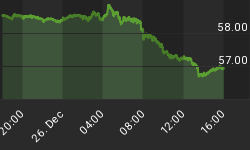One of the hardest things for me to remember is not to believe everything I see. I am a sucker for the latest "can't lose" strategy supported by the experts. This morning I ran across a trade that looked too good to be true. I think it is, but I think it is instructive to walk through the potential hidden land mine. The event is the Wednesday afternoon release of NFLX earnings but there is a hidden trap for option traders using one commonly used earnings play structure.
The construction of the play is that of a "double calendar" spread. The underlying profit engine is an attempt to exploit the routinely seen spike in implied volatility (IV) of the options series most closely following earnings release. In this case, NFLX has weekly options which expire 48 hours after the scheduled announcement.
In order to understand the situation, let's walk through the components step-by-step. First, is the routinely observed spike in IV seen as earnings release approaches present? As shown in the options pricing matrix below, the IV of the weekly options is substantially higher than the next series in time, the February monthlies:

Next, we need to get an idea of the magnitude of the price movement expected by option traders. This price range can be imputed from the break even points of the at-the-money straddle in the front most options. As shown in the graph below, this analysis gives a current expected price range of 167-203 following earnings release.
Now let us consider a double calendar spread with strikes selected to encompass this anticipated price range. To review quickly, a calendar spread consists of selling a short dated option while buying a longer dated option at the same strike price. An example of such a trade in NFLX is presented below:
That looks pretty sweet, right? We have projected break even points of 147.3 and 238.86 and a probability of profit (P.P.) of 100%. So all we have to do is put this on, wait for earnings, and barring any huge surprise, we take profit of 100% or more home.
What could possibly go wrong? Unfortunately there is a high probability of a sequence of events that will totally erase any profits and likely result in a loss. Go back and look at the option pricing matrix above and focus on the IV of the options we are buying. These options trade at a volatility of 60%. Is that high or low? You tell me from this historic graph of volatility in NFLX options:
As you can see, the current level of volatility that you are buying in the long legs of the calendar is quite elevated on a historical basis. Furthermore, the spread between statistical (historical) and implied volatilities has rarely been greater. This combination of events sets up a high probability of a "volatility crush" on the options you hold long as part of the spread. The moving parts of this crush are:
1. Cessation of the "bleeding" of juiced IV from the weeklies into the monthly series as the weekly option IV deflates massively.
2. Convergence of IV toward the value of historical volatility in order to close the huge divergence in the levels currently present.
This situation sets up a high probability for a negative impact on the trade which will almost certainly result in a loss. Do I know these events will transpire? Absolutely not, and I may be 100% wrong. Survival as an options trader is all about recognizing high probability events and structuring trades accordingly. No free cheese here; time to move along to the next trade.
If you would like to receive these reports please join my free newsletter: http://www.optionstradingsignals.com/profitable-options-solutions.php


















